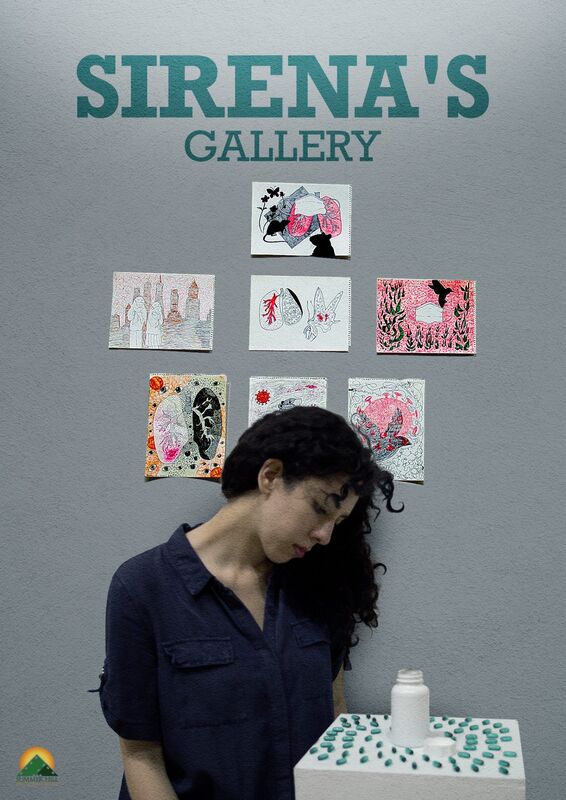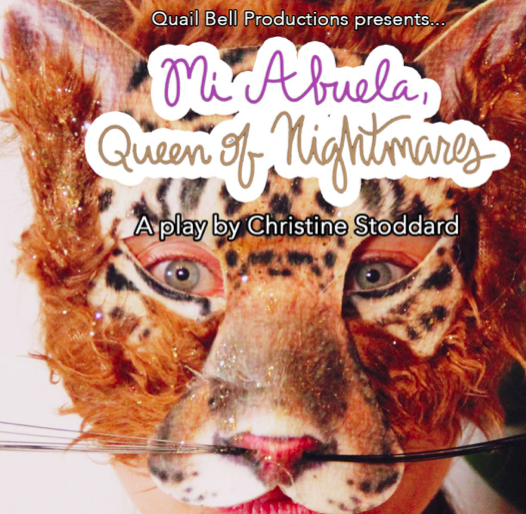|
The Breadcrumbs widget will appear here on the published site.
The Magic of GoreloreBy Christine Stoddard QuailBellMagazine.com Tim Burton is to cinema what Edgar Allen Poe is to literature: a master of the dark, bizarre, and mysterious. Burton's ghostly taste and ‘Goth’ niche in Hollywood are undeniable. Films he has directed and/or produced include: “Sweeney Todd: The Demon Barber of Fleet Street,” “9,” “James and the Giant Peach,” “Batman Forever,” “Cabin Boy,” “The Nightmare Before Christmas,” “Corpse Bride,” “Charlie and the Chocolate Factory,” “Big Fish,” “Planet of the Apes,” “Sleepy Hollow,” “Mars Attacks!”, “Ed Wood,” “Batman Returns,” “Edward Scissorhands,” “Batman, “Beetle Juice,” “Pee-wee’s Big Adventure,” “Frankenweenie,” and “Vincent.” His influences range from Ray Harryhausen’s animation to early Disney cartoons to Fellini to Vincent Price and more (Cortez 2004). From "Nightmare Before Christmas" to "Beetle Juice," Burton's films usually feature sinister palettes, deep shadows, the topics of love and belonging, and pariahs for principal characters. In order to convey his trademark themes and achieve his unique aesthetic, Burton employs a variety of special techniques. His use of stop-motion animation, elaborate makeup, and dramatic lighting/coloring truly distinguish his films from others made during our age of CGI omnipresence. For Burton, worshipping detail trumps all else. In a time when most animators deem stop-motion animation and puppet films "a dying art,” Burton continues using it because it gives the audience the feeling of actually "being there" (Burton 2008). Stop-motion animation is, according to some filmmakers, one of the most tedious forms of animation (Burton 2008) because it requires the progressive movement of an object between frames every 1/24 of a second. In her 2001 article, "When Art Comes to Life," Amy Porter describes stop-motion animation as a "simple technology" possessing "nostalgic awkwardness" (12). Burton did not direct his most explicit stop-motion projects, like “Nightmare” and “Corpse Bride” in order to remove himself from the “painstakingly slow process" (Salisbury 71) involved. Burton's most famous stop-motion film is "The Nightmare Before Christmas” (1993), directed by Henry Selick. Claymation, one of the most popularly known forms of stop-motion, entails the majority of the film's special effects. TV specials, like "Rudolph the Red-Nosed Reindeer" and the "Grinch who Stole Christmas," inspired Burton in realizing his poem, "The Nightmare Before Christmas," in film form. His illustrations drew upon the drawings of artists like Ronald Searle and Edward Gorey; Selick's crew then referred to Burton's illustrations for 3-D character and set design. The crew, which consisted of 200 workers, even spread clay and plaster across the set and scratched it so it created the look of pen-and-ink cross-hatching. According to Selick, the film's production design resembled a “living illustration” (Burton 2008). Three to four people built all the “Nightmare” characters in oil-based clay over hand-machined ball and socket armatures. The puppets then had to be molded, injected with a foam latex material, and baked in an oven. Once removed from the oven, the characters’ molding was peeled off and they were sent to the Fabrication Department. In the Fabrication Department, artists attached clothing, hair, fur, and other finishing touches to the puppets; every detail counted, especially for close-up shots. Major characters, like Jack the Pumpkin King and Sally, required additional considerations, including a range of complex facial expressions. The team therefore created hundreds of hand-sculpted replacement heads for Jack, allowing him to display a spectrum of emotions. Similarly, Sally wore interchangeable face masks so animators could manipulate her expressions. They decided against a full head change like Jack’s to lessen the chance of animators accidentally ruining her long, red hair (Burton 2008). Animators could not be assigned their own character(s); instead, all participants had to work as a group and took turns animating characters according to their personal strengths. As an example, certain animators were better at adjusting the puppets for close-up scenes, for instances, while others' talents lied in creating very active motion. Because of the slowness inherent to stop-motion animation, “Nightmare” required almost three years to finish. Every 1/24th of a second required a new, only slightly different puppet pose. Consequently, crew members averaged a mere sixty seconds to one minute of film every week. Burton’s "Corpse Bride" (2005) relies heavily upon stop-motion animation techniques, as well. In fact, "Corpse Bride" employs much of the same techniques as "Nightmare," relying heavily upon custom-made puppets moving across handmade sets. Differences between the two exist, however. In order to monitor the action of the puppets and ensure sleek movement, the crew shot the entire process digitally, as opposed to using film like “Nightmare.” This allowed to the animators to review individual frames, as well as the overall flow of the project quickly and easily. “Corpse Bride” also depended upon a small amount of CGI, whereas “Nightmare” used exclusively claymation and small bits of second-layering traditional animation. “Beetlejuice” (1988) ranks third as the Tim Burton film with the most stop-motion animation, employing the method for Hell scenes. "Pee-Wee Herman's Big Adventure" (1985), the first feature film that Burton directed, also makes use of stop-motion, but to a far lesser extent than the aforementioned films because it is almost entirely live-action. Burton hired Rick Heinrichs, one of his CalArts classmates, for the stop-motion animation scenes (Salisbury 49). "James and the Giant Peach" (1996) features both stop-motion and live-action sequences, but it is primarily an animated film. Other Burton films that evidence stop-motion animation include: "Vincent" (1982) and “Frankenweenie" (1984). Burton's fans are eagerly awaiting his 2010 adaptation of "Alice in Wonderland" (2010), which will, unsurprisingly, feature stop-motion animation techniques layered over live-action sequences. Though stop-motion is extremely time-consuming and much more expensive than standard computer-generated imagery (CGI), Burton insists on applying the proper medium to the proper story. In an interview with Cinematical, he stated, “…you just do a project... in the medium that fits it and do a good story…It will connect if it's the right thing” (Gilchrist 2009). Color is another huge element in Burton's films, created by careful lighting and, in the case of his puppet films, pensively hand-painting. On the miniature puppet sets of "Nightmare” the crew used as many as twenty to thirty lights to steepen contrast and elongate shadows (Burton 2008). That represents as many lights as might be used on a live-action Hollywood set, showing that the crew applied large-scale film principals to an elaborate small-scale situation. Besides granting “Nightmare” a Gothic flair, the lights and colors contribute to the film’s symbolism. In Halloween Land, everything appears in gloomy shades because the characters there lack the sincerity, hope, and imagination of a warmer atmosphere. In Christmas Land, the landscape buzzes with all the festive colors traditionally associated with the holidays; the waves of red, green, and gold allude to cheer and optimism. The Real World, where Jack goes to deliver presents, though, is much blander; the houses, the cars, the people--everything is a neutral tone or a humdrum pastel. In other words, reality hovers somewhere between Halloween Land and Christmas Land in terms of faith and rosy sentiments. Crew members in the Fabrication Department hand-painted everything on the Halloween Land, Christmas Land, and Real World sets. Just as the color palette is very precise in "Nightmare"--with all its carefully chosen shades, "Corpse Bride" also features two main color families that help contrast two worlds through the use of diligent lighting and hand-painting. Life scenes show everything in grays, like tintypes, while Death scenes are much more flamboyant (Burton 2008). The Life scenes therefore come across as uptight and dreary, whereas the Death scenes read as significantly more relaxed and fun. Such a contrast also exists in "Edward Scissorhands.” Black, white, and gray prevail in Edward's isolated castle, which signals one of the reasons why he looks so amiss in the suburbs, where tacky pastels prevail. Edward’s castle is a place of loneliness and old-fashioned taste; the suburbs scream of neighborly attention and gaudiness. The list of other examples of Burton’s color consciousness, from “Sweeney Todd” to “Big Fish,” continues, but another effect essential to Tim Burton films is strange and enchanting makeup. Stan Winston is the man responsible for realizing many of Burton's monsters. For instance, he brought Burton's vision of Edward's glinting hands in “Edward Scissorhands” and Penguin's beak in "Batman Returns” to life. In the book, Men, Makeup, and Monsters: Hollywood Masters of Illusion and Fx, Winston explains that Edward's hands were basically gloves with seven blades attached to each hand (Timpone 48). In order to make Danny DeVito’s penguin beak in “Batman Returns,” Winston created a single-piece prosthetic that extended from DeVito’s forehand to his upper lip; afterwards, Winston smeared Tuttle rubber, greasepaint, and Par paint over the beak . Nappy hair extensions, decaying dentures, and Greg Cannom’s three-finger appliances completed the overall villainous look (Timpone 52). “Beetle Juice” is another example of a Burton film that employs impressive makeup effects, mostly in the realm of monster prosthetics. Robert Short, who won an Oscar for his work, oversaw all the makeup, including the creature effects that contributed to what the book Ghosts and Angels in Hollywood Film: Plots, Critiques, Casts and Credits calls “a banquet of wonderfully grotesque sights” (Parish 20). Since the mid-1980s, Burton has forged his own niche with his spooky and fantastical cinematic visions. He draws upon a variety of esoteric influences and repeatedly explores the same themes. The question, then, is how exactly will he leave a mark on cinematic history? How will his pioneering into color/lighting, makeup, and stop-motion effects impact future dark-minded filmmakers? Whatever the answer may be, it is clear that Tim Burton’s reputation for ‘gorelore’ will persist throughout the rest of his career. Works Cited Burton, Tim. The Nightmare Before Christmas: Collector’s Edition, Blu-ray release. “Bonus Features.” Walt Disney Pictures, 2008. Burton, Tim. Corpse Bride. “Bonus Featuers.” Warner Brothers Pictures, 2005. Cortez, Joe. “Burton Influences.” The Tim Burton Collective. 2004. 9 November 2009. http://www.timburtoncollective.com/influences.html Gilchrist, Todd. Cinematical. “Interview: Tim Burton.” 2009. 11 November 2009. http://www.cinematical.com/2009/08/05/interview-tim-burton/ Parish, James Robert. Ghosts and Angels in Hollywood Film: Plots, Critiques, Casts and Credits for 240 Theatrical and Made-for-Television Releases. Jefferson, North Carolina: McFarland and Company, Inc. Publishers, 1994. Porter, Amy. “When Art Comes to Life.” MoMa, Vol. 4, No. 8. New York: The Museum of Modern Art, 2001. Salisbury, Mark. Burton on Burton. London: Faber and Faber, 2006. Timpone, Anthony. Men, Makeup and Monsters: Hollywood’s Masters of Illusion and Fx. New York: St. Martin’s Press, 1996. CommentsComments are closed.
|
|







